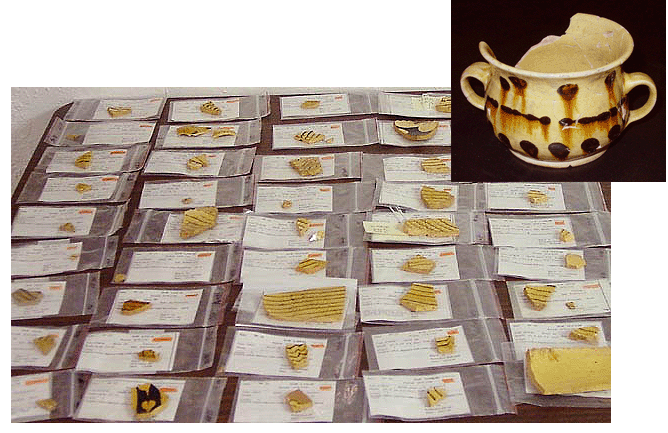
Some of the hundreds of yellow slipware sherds from the Goodsell Site in North Branford, more than a dozen of which cross-mended to form a posset pot (inset).
Archaeologists often discover fragments of an object dispersed across a wide area of a site. Many factors can cause such dispersal: the collapse of a building, plowing, using soil to fill a hole (such as a cellar), even rodent action. After the location and depth of each fragment has been recorded, it is often useful to try to assemble objects from the fragments, particularly in the case of ceramics.

|
|
Some of the hundreds of yellow slipware sherds from the Goodsell Site in North Branford, more than a dozen of which cross-mended to form a posset pot (inset). |
If the cross-mending is successful, all or at least a substantial portion of the object emerges, providing the archaeologist with more information than just the scattered pieces could provide. For example, at the Sprague Site, cross-mending produced six separate milk pans, suggesting the importance of dairying in the household economy. Numerous cross-mended baking dishes and pans indicated that the family consumed meat and fruit pies as part of their diet. Cross-mending also showed that the Spragues had a complete tea set.
To try your hand at cross-mending, look at these ceramic fragments from the Ephraim Sprague Site.